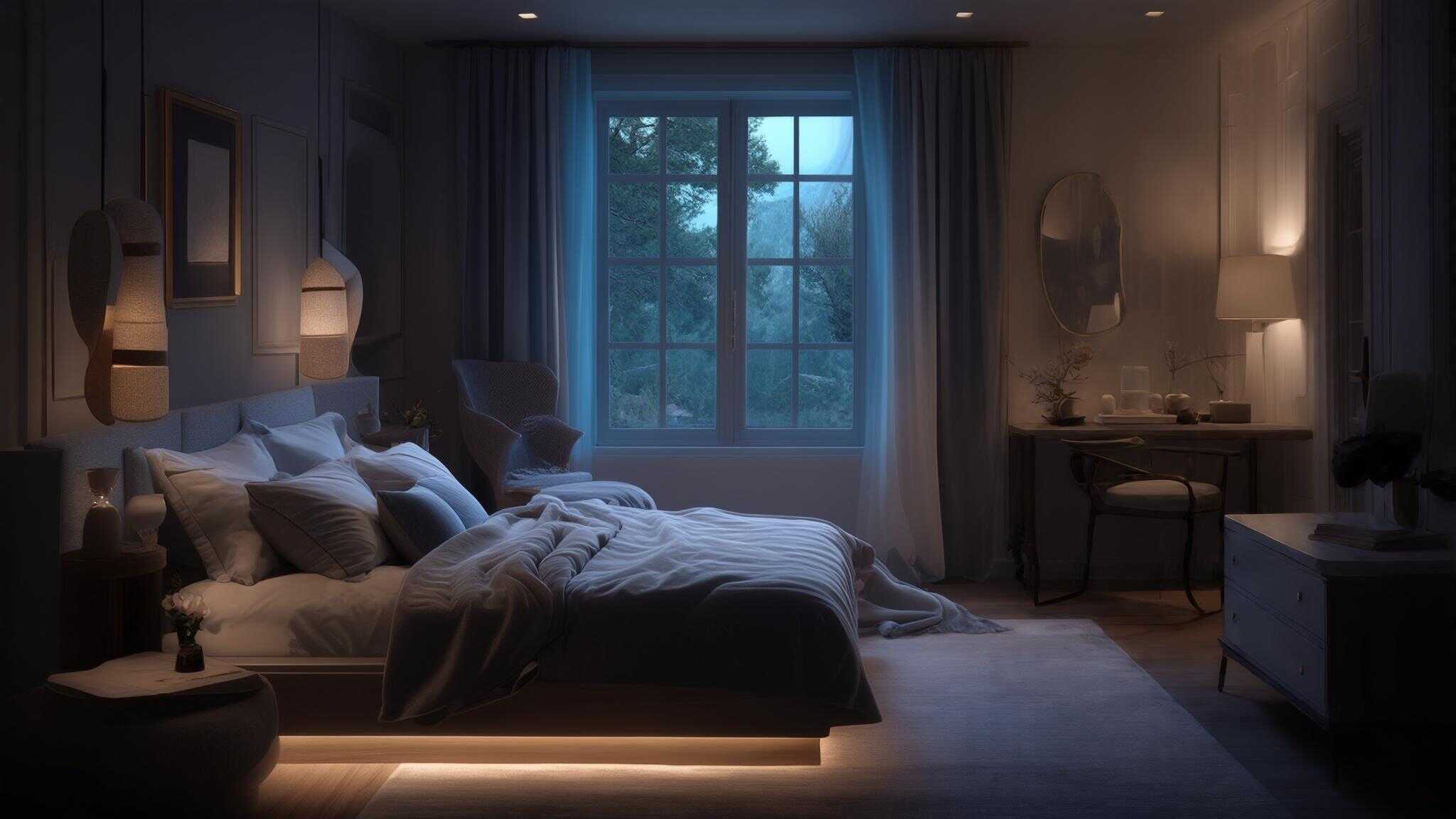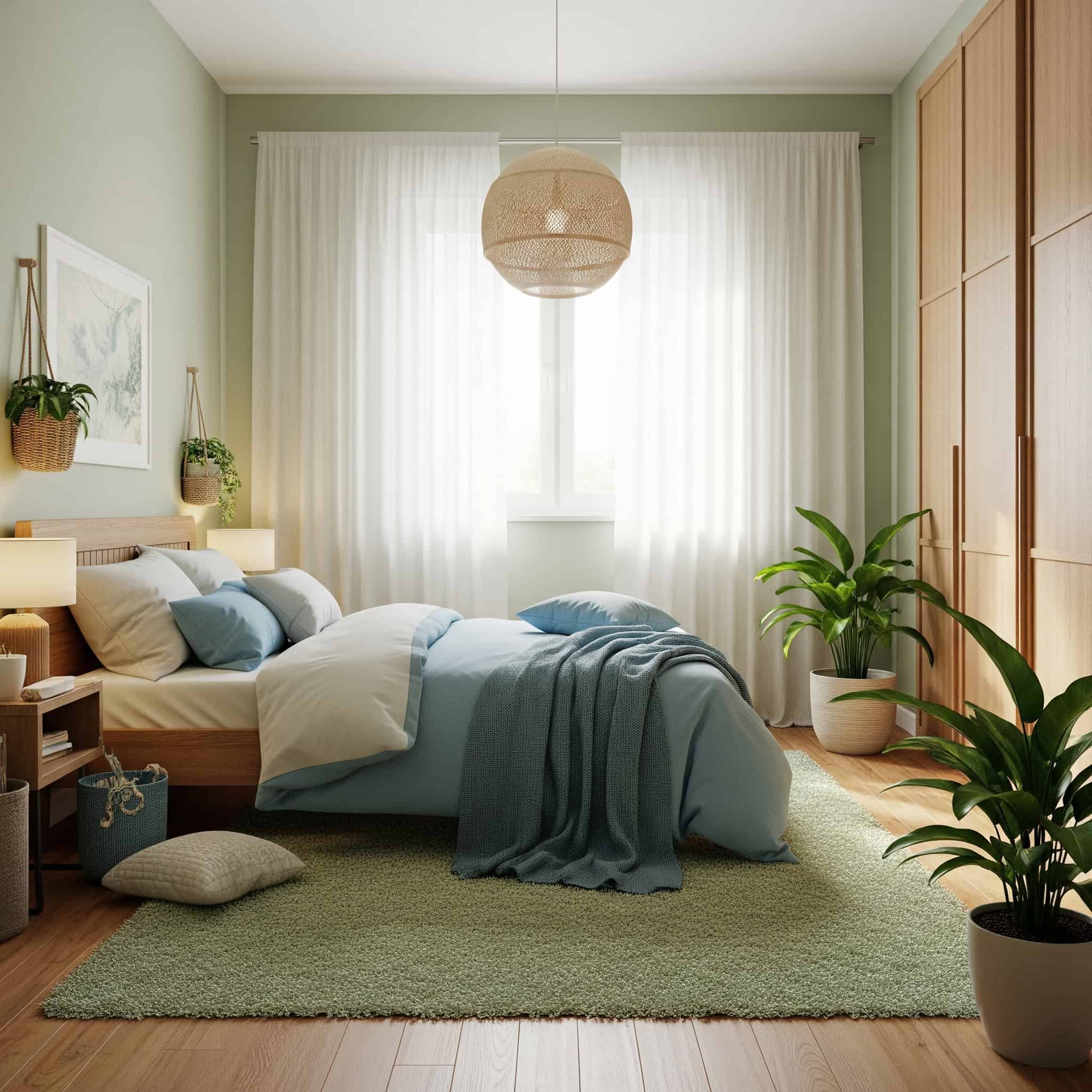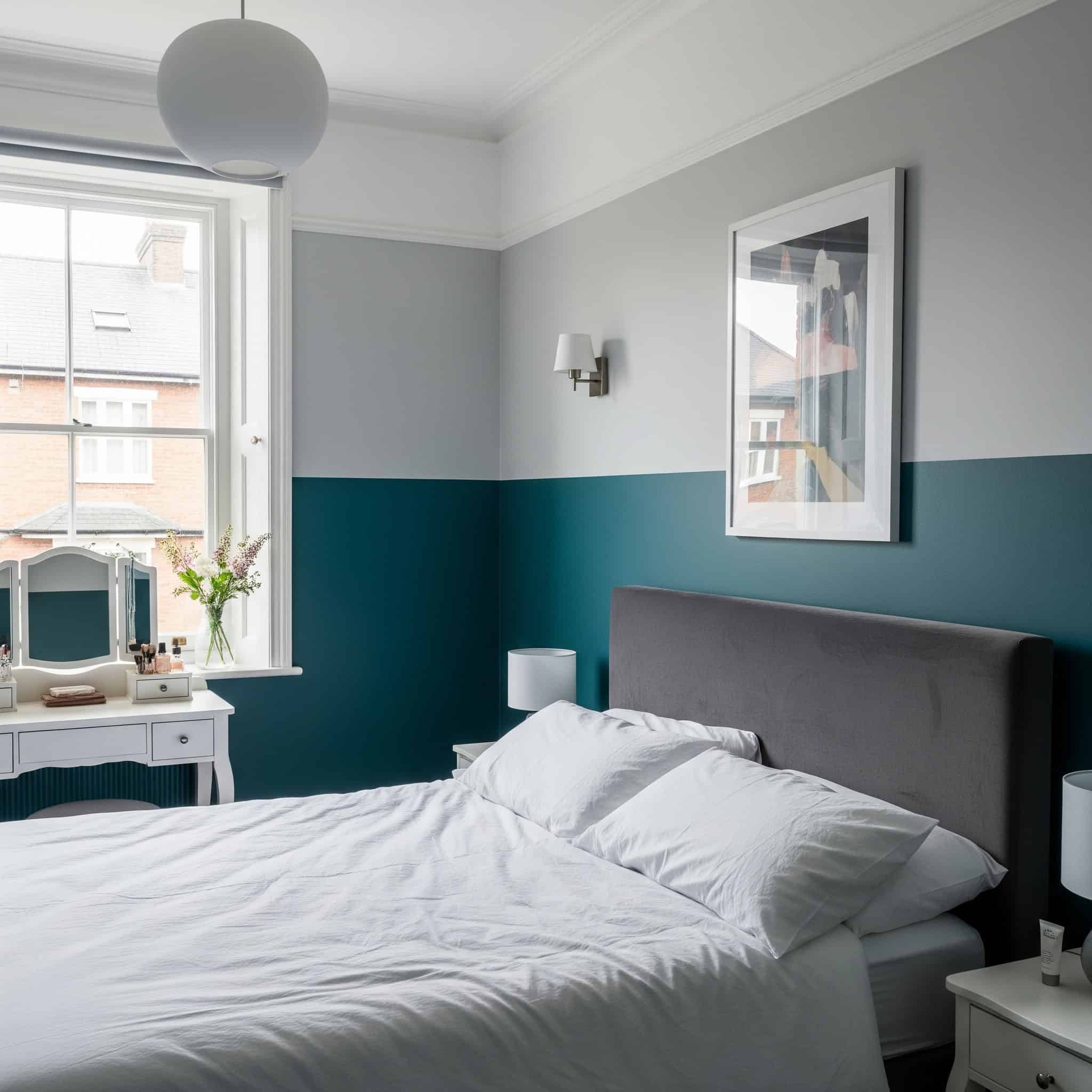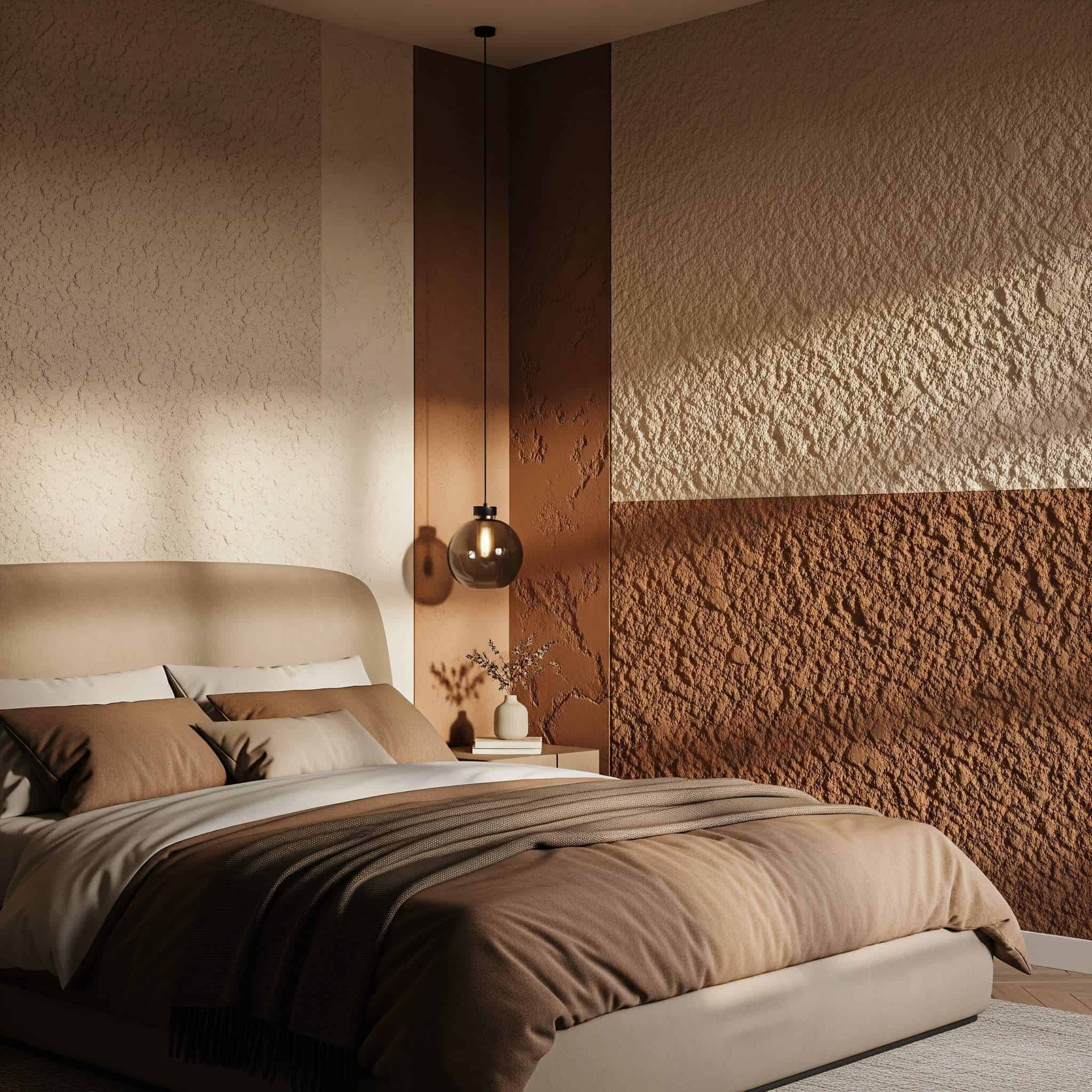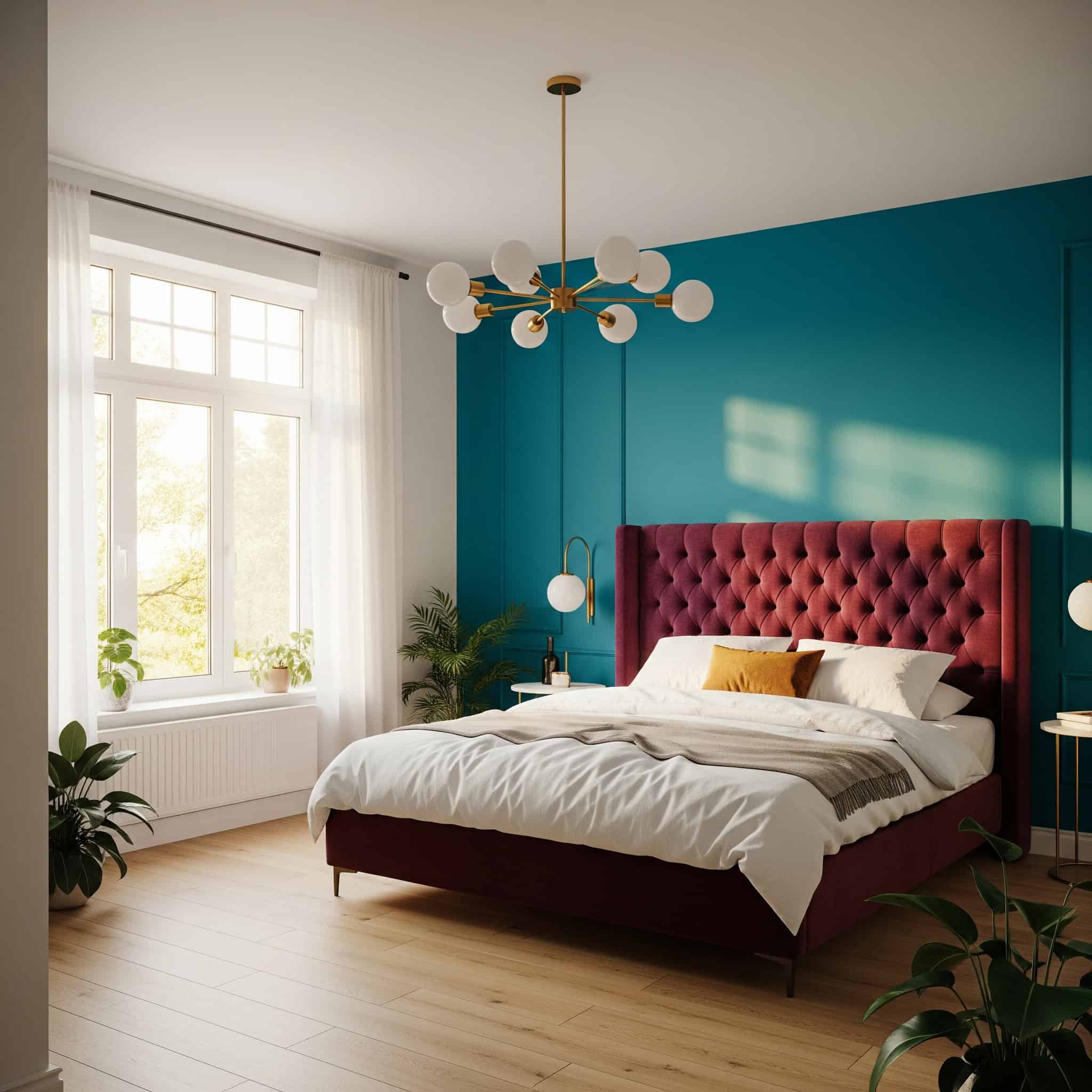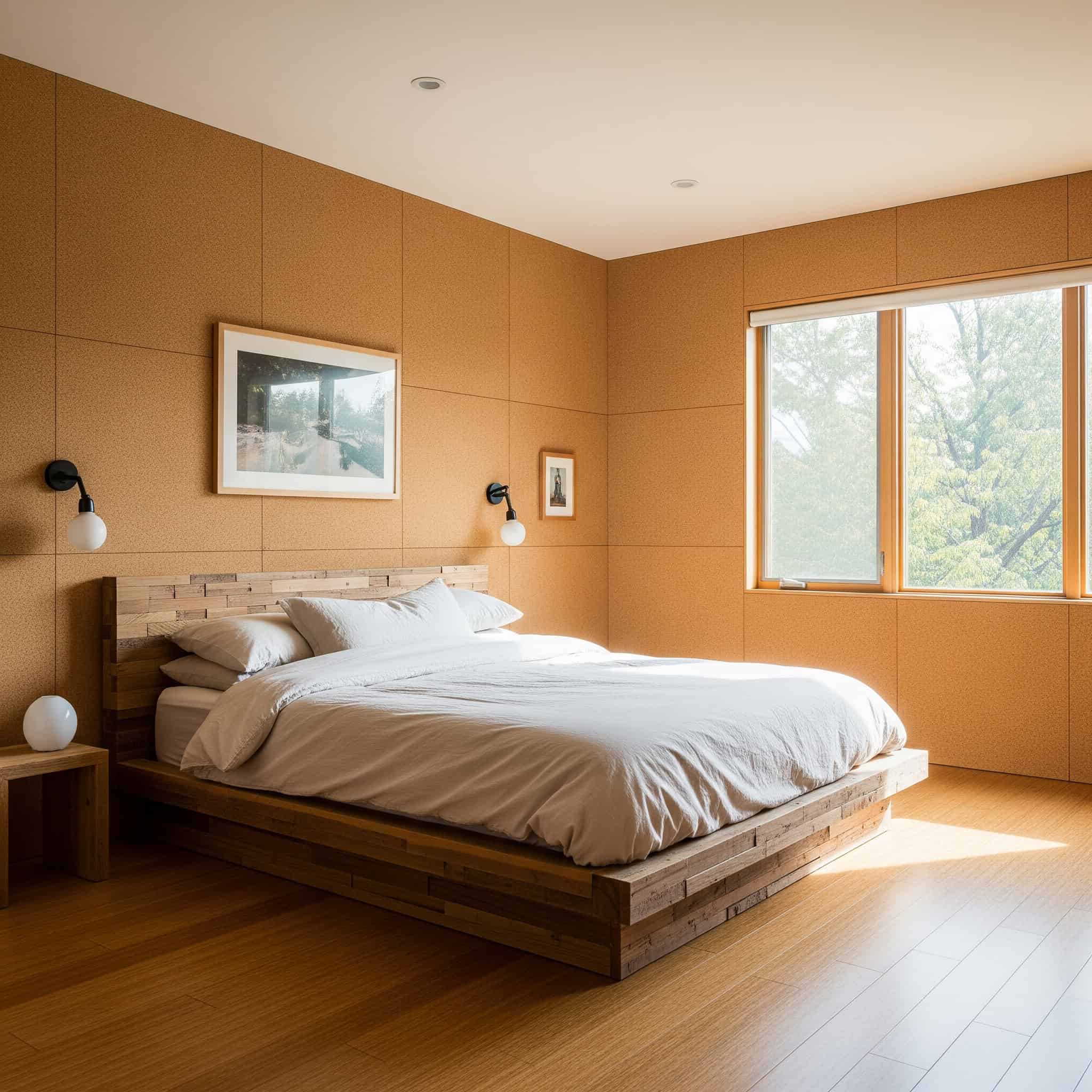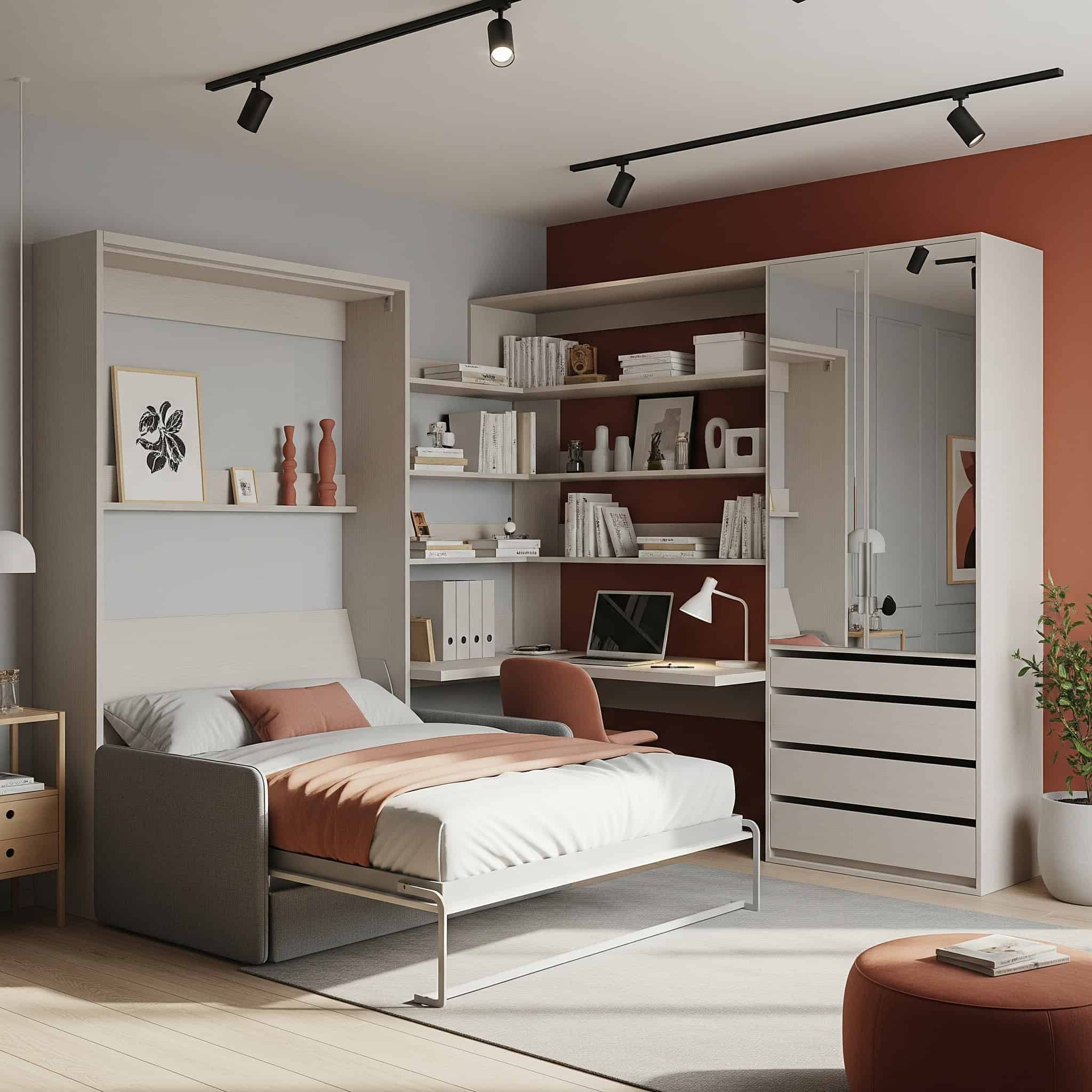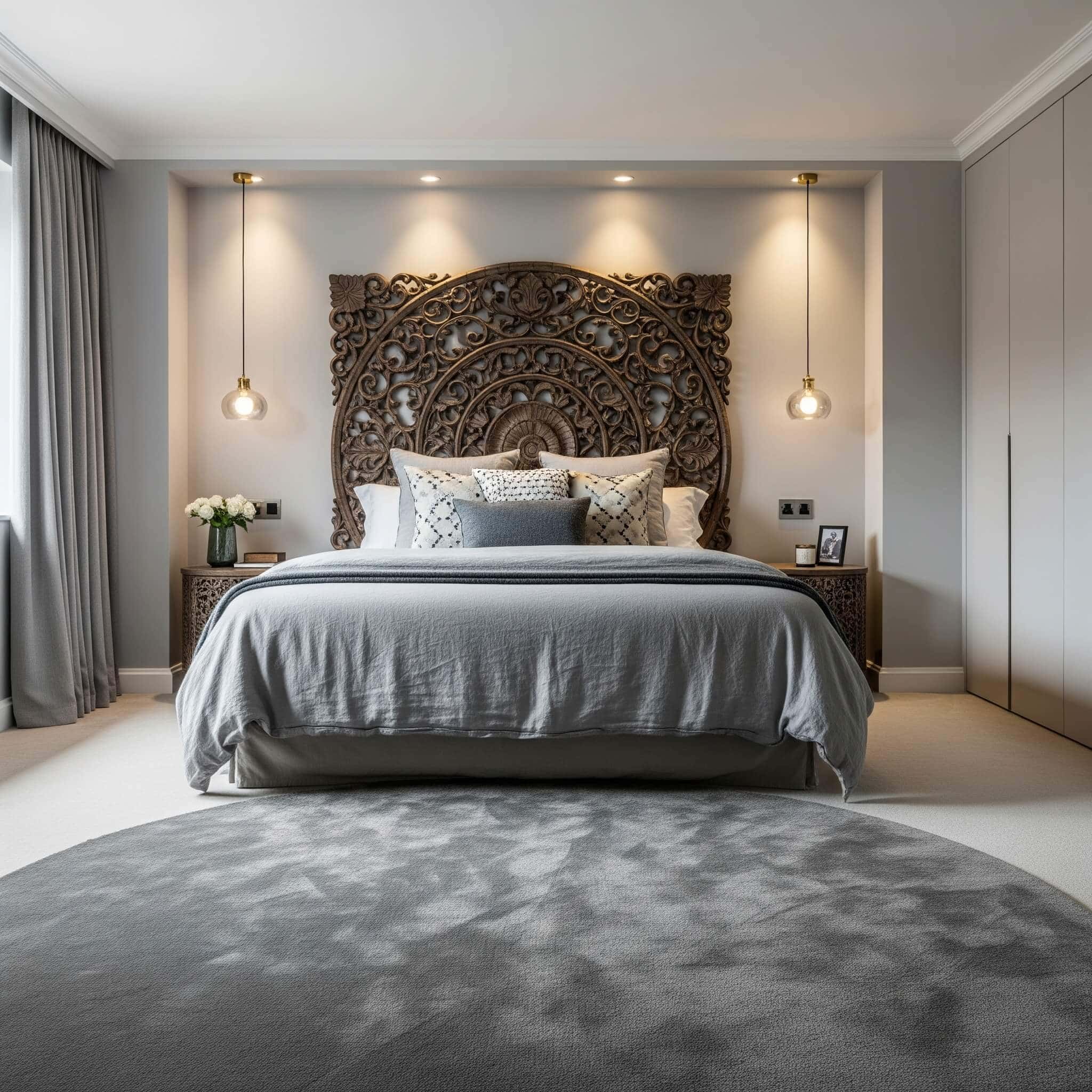25 Stunning Bedroom Ideas for 2025: Transform Your Space into a Dream Retreat
According to a recent survey by the National Association of Home Builders, 70% of homeowners plan to renovate their bedrooms in the next year. I’ve been helping clients redesign their bedrooms for over a decade, and I’ve never seen more excitement about bedroom transformations than now. Your bedroom should be your sanctuary—a place that reflects your personality while supporting rest and rejuvenation. This comprehensive guide explores 25 innovative bedroom ideas across five categories to help you create your perfect space in 2025.
Table of Contents
-
What to Consider When Planning Your Bedroom Design
-
Color Schemes & Wall Treatments
-
Furniture & Layout Solutions
-
Lighting & Technology Integration
-
Textiles & Soft Furnishings
-
Wellness & Biophilic Elements
-
How Jiffy Junk Can Help With Your Bedroom Transformation
-
Final Thoughts
What to Consider When Planning Your Bedroom Design
Before jumping into specific ideas, I always tell my clients to think about what they really need from their bedroom. Are you looking for better sleep? More storage? A place to read or work? Your answers will guide every decision you make.
Space planning is crucial when redesigning your bedroom. I recommend measuring your room dimensions and creating a scaled floor plan. Don’t forget to account for door swings, window placements, and traffic flow patterns—you’ll need minimum clearances of 30 inches to move comfortably around the room.
When it comes to your budget, I’ve found the 70/30 rule works best. Put 70% toward foundational elements like furniture, flooring, and wall treatments. Save the remaining 30% for accessories, lighting, and textiles that you can more easily update later.
|
Design Factor |
Key Considerations |
Impact on Bedroom Design |
|---|---|---|
|
Functionality |
Sleep quality, storage needs, additional activities |
Determines furniture selection and layout priorities |
|
Space Constraints |
Room dimensions, architectural features, traffic flow |
Influences scale of furniture and placement options |
|
Personal Style |
Modern, traditional, minimalist, eclectic preferences |
Guides material, color, and design element choices |
|
Budget |
Available funds, priority elements, long-term investment |
Determines quality level and implementation timeline |
|
Sustainability |
Eco-friendly materials, energy efficiency, longevity |
Affects product selection and construction methods |
|
Lighting |
Natural light sources, artificial lighting needs, mood |
Impacts fixture selection and window treatment choices |
|
Color Psychology |
Emotional responses, visual perception, space effects |
Guides color palette and accent choices |
|
Adaptability |
Changing needs, future-proofing, versatility |
Influences investment pieces versus temporary elements |
Before starting your bedroom transformation, consider reading our guide on “How to Get Rid of Clutter” to create a clean slate for your new design. Removing unnecessary items can help you better visualize your space and make room for new elements.
Color Schemes & Wall Treatments
The colors and textures on your bedroom walls set the tone for your entire space. I’ve seen wall treatments completely transform bedrooms without requiring a full renovation. Wall treatments make such a big impact because they account for about 60% of what you see in a bedroom due to their surface area. This makes them the most cost-effective way to transform your space.
When choosing paint finishes, remember that they affect both looks and function. Flat finishes hide wall imperfections but are harder to clean. For most bedroom walls, I recommend eggshell or satin finishes, which provide a subtle sheen with better durability.
1. Nature-Inspired Palettes
I’ve noticed more clients gravitating toward colors that remind them of the outdoors. Sage green, soft blues, earthy browns, and gentle creams create a serene bedroom environment that promotes relaxation and better sleep. These colors work particularly well in rooms with natural light and pair beautifully with natural wood furniture.
Nature-inspired colors typically fall within the 30-60% Light Reflectance Value (LRV) range. This technical detail matters because it provides enough reflectivity to brighten your bedroom without creating glare. What’s really fascinating is that these biophilic color schemes have been shown to reduce cortisol levels by up to 15% and improve sleep quality by regulating circadian rhythms.
2. Two-Tone Wall Treatments
Want to add architectural interest to your bedroom without major construction? Two-tone wall treatments can visually alter your room’s proportions and add character. This technique involves painting the lower and upper portions of your walls in different colors, separated by a chair rail or simple painted line.
The optimal proportion for two-tone walls follows the 1/3 to 2/3 ratio, with the darker color typically on the bottom to ground the space. I always tell my clients that this creates visual stability. For the cleanest look, two-tone applications require precise taping and edge work. I recommend using 220-grit sandpaper between coats to ensure clean lines where colors meet, especially when using contrasting sheens.
A small bedroom with 8-foot ceilings was transformed using a two-tone wall treatment. The lower 40% of the walls were painted in Benjamin Moore’s Hale Navy, while the upper 60% used Simply White. This created the illusion of higher ceilings while adding architectural character to an otherwise plain room. The homeowner completed this transformation for under $200 in paint supplies, making it one of the most cost-effective ways to dramatically change the room’s appearance.
3. Textured Wall Finishes
I’m seeing a huge comeback of textured wall finishes in bedroom design. Options range from subtle limewash paint and Venetian plaster to more pronounced textured wallpapers. These treatments create visual interest even in minimalist bedrooms and can hide minor wall imperfections.
Textured finishes like limewash contain mineral components (typically calcium carbonate) that create micro-texture, reflecting light differently throughout the day. This adds dimensional depth that’s impossible to achieve with flat paint. The application technique you choose significantly impacts the final appearance. For instance, limewash applied with a cross-hatch technique creates more texture than circular motions, while plaster finishes require specialized trowels and multiple layers for authentic results.
4. Bold Accent Walls
A bold accent wall creates a focal point in your bedroom without overwhelming the space. This approach works particularly well behind the bed, where it frames your sleeping area and adds personality. Consider rich jewel tones like emerald green or sapphire blue, warm terracottas, or even patterned wallpaper for maximum impact.
Accent walls are most effective when placed on walls that already serve as natural focal points—typically the headboard wall or the first wall visible upon entering the room. This enhances architectural logic rather than competing with it. For smaller bedrooms, I recommend using colors at 60-80% saturation rather than full intensity to prevent visual overwhelm in limited spaces.
When creating a bold accent wall in your bedroom, consider the long-term impact. If you’re planning to eventually sell your home, check out our article on “Less Junk, More Happiness” for tips on creating designs that appeal to both you and future buyers.
5. Sustainable Wall Coverings
I’ve been recommending sustainable wall coverings more frequently as clients become more environmentally conscious. Options include cork panels, recycled wood accent walls, grass cloth wallpaper, and clay-based finishes. These materials often improve indoor air quality by reducing VOCs and can contribute to better temperature and sound regulation in your bedroom.
Sustainable wall coverings like cork provide natural thermal insulation with R-values between 1.5-3 per inch. This can potentially reduce your energy costs while also absorbing sound frequencies between 250-1000 Hz that commonly cause sleep disturbances.
Installation requirements vary significantly between materials. Cork panels typically require acclimation of 72 hours in the installation environment to prevent later expansion/contraction issues. Clay finishes need properly prepared substrates with specific primers to ensure adhesion. These technical details matter for a successful installation that will last for years.
Furniture & Layout Solutions
Furniture selection and arrangement form the functional backbone of your bedroom design. The right pieces and layout can maximize space efficiency, create visual interest, and enhance comfort. From multifunctional pieces that serve multiple purposes to statement beds that anchor your design, these ideas help you create a bedroom layout that works for your specific needs.
Effective bedroom layouts allocate approximately 60% of floor space to furniture and 40% to circulation paths. I always make sure primary pathways measure at least 30 inches wide for comfortable movement. When arranging furniture, prioritize the bed position first. I typically place it on the wall opposite the door or on the longest wall, with a minimum of 24 inches clearance on three sides (36 inches is even better) for optimal functionality.
|
Bedroom Size |
Recommended Bed Size |
Minimum Clearances |
Optimal Furniture Pieces |
|---|---|---|---|
|
Small (10x10ft) |
Full/Double |
24″ around 3 sides |
1 dresser, 2 nightstands, wall storage |
|
Medium (12x12ft) |
Queen |
30″ around 3 sides |
1 dresser, 2 nightstands, 1 accent chair |
|
Large (14x16ft) |
King/Cal King |
36″ around all sides |
Complete set with dresser, chest, nightstands, seating area |
|
Master Suite (16x20ft+) |
King/Cal King |
36″+ around all sides |
Complete set with separate zones for sleeping, dressing, and relaxing |
6. Multifunctional Furniture
I’m a huge fan of furniture that pulls double duty, especially in smaller bedrooms. Platform beds with built-in storage drawers eliminate the need for separate dressers. Headboards with integrated shelving provide display and storage space. Desks that convert to vanities offer flexibility for different activities.
Storage beds typically provide 15-30 cubic feet of hidden storage space, equivalent to a standard 3-drawer dresser, while maintaining the same footprint as a regular bed frame. That’s significant space savings! When shopping for multifunctional pieces, pay attention to weight capacity and mechanism quality. Hydraulic storage beds should have mechanisms rated for at least 500 pounds to ensure long-term functionality, while convertible furniture requires reinforced hinges tested for at least 10,000 open/close cycles.
7. Floating Furniture
Wall-mounted or “floating” furniture creates the illusion of more floor space while adding a contemporary aesthetic to your bedroom. I’ve installed floating nightstands, desks, and even dressers that free up floor area, making rooms feel larger and more open. This approach also makes cleaning underneath furniture much easier.
Proper installation of floating furniture requires identifying wall studs or using appropriate anchoring systems. Wall-mounted nightstands typically need to support 30-50 pounds of dynamic load, requiring either direct stud mounting or toggle bolts rated for at least 75 pounds in drywall. I always install floating furniture at ergonomic heights—nightstands 2-4 inches above mattress height, desks at 29-30 inches from the floor, and storage units with at least 6 inches clearance from the floor for effective cleaning.
In a 120-square-foot bedroom renovation, replacing traditional nightstands with floating wall-mounted shelves created the perception of an additional 5 square feet of floor space. The homeowners installed two 18″ × 12″ walnut shelves with hidden bracket systems at 27″ height (4″ above the mattress). Each shelf cost $85 plus installation supplies, and they added integrated LED strip lighting underneath for $35 per side, creating both functional surfaces and ambient lighting without the visual weight of standard nightstands.
8. Statement Beds
A statement bed serves as the centerpiece of your bedroom design. I’ve helped clients select oversized upholstered headboards in rich textures, modern canopy beds with minimalist frames, and platform beds with unique architectural details. These pieces establish your bedroom’s character and set the tone for the entire space.
Headboard proportions significantly impact visual balance. The optimal headboard height typically ranges from 14-29 inches above the mattress top, with width extending 2-4 inches beyond each side of the mattress to create proper scale. For canopy beds, ceiling height is a crucial consideration. I recommend a minimum of 9 feet to maintain proper proportions. The ideal canopy height should allow at least 24 inches of space between the canopy frame and ceiling to prevent a cramped appearance.
9. Curved and Organic Shapes
I’ve been incorporating more curved and organic-shaped furniture into bedroom designs to soften spaces dominated by straight lines and right angles. Rounded headboards, curved dressers, oval mirrors, and kidney-shaped side tables create a more dynamic, flowing aesthetic. These pieces can serve as statement elements in an otherwise simple design scheme.
Curved furniture requires additional clearance in floor plans—typically 15-20% more space than rectangular pieces with equivalent functionality. This is due to the inefficiency of curved footprints and the need for proper visual spacing. It’s also worth noting that curved furniture typically costs 30-50% more than straight-line equivalents. This price difference comes from the specialized manufacturing techniques like steam bending, lamination, or CNC routing that require more material and labor.
When incorporating curved and organic furniture shapes into your bedroom design, you might need to remove older, angular pieces first. Our guide on “Best Method for Disposing of a Sofa” can help you responsibly remove outdated furniture to make way for your new curved pieces.
10. Modular Bedroom Systems
Modular bedroom systems have become my go-to recommendation for clients who anticipate changing needs. These customizable solutions include configurable wardrobe systems, adjustable shelving units, and modular bed frames that can be expanded or reconfigured as requirements change.
Modular systems typically use standardized dimensions with components in increments of 10-30cm. This allows for precise space utilization with approximately 85-90% efficiency compared to 70-75% for conventional furniture arrangements. That’s a significant improvement in space usage! The connection mechanisms in quality modular systems use metal-to-metal fittings rather than wood screws. This allows for multiple reconfigurations without degrading structural integrity—premium systems can withstand 20+ disassembly/reassembly cycles while maintaining full load capacity.
Lighting & Technology Integration
Effective lighting transforms how your bedroom looks and functions, while thoughtful technology integration enhances convenience and comfort. I’ve seen poorly lit bedrooms become vibrant, functional spaces with the right lighting design.
A comprehensive bedroom lighting plan requires approximately 2.5 watts of LED lighting per square foot, distributed across ambient, task, and accent lighting layers. This creates proper illumination without harsh shadows. When integrating smart home technology, most bedrooms typically involve 5-7 connected devices including lighting, climate control, and entertainment systems. This requires careful planning for power needs and wireless network coverage with consideration for potential interference patterns.
11. Layered Lighting Design
I always recommend a layered approach to bedroom lighting. This combines ceiling fixtures for general illumination, wall sconces or reading lights for task lighting, bedside lamps for softer light, and accent lighting like LED strips to highlight architectural features. A well-designed lighting scheme allows you to adjust the mood and functionality of your bedroom throughout the day.
Effective layered lighting follows the 60-30-10 distribution principle: 60% ambient lighting from ceiling fixtures, 30% task lighting from reading lights and vanity lighting, and 10% accent lighting from cove lighting or picture lights. This creates proper balance and functionality.
Light temperature selection significantly impacts bedroom functionality. I typically recommend 3000K warm white for creating relaxing environments conducive to sleep preparation. For task areas like reading nooks or vanities, 4000K neutral lighting improves focus without disrupting circadian rhythms.
|
Lighting Layer |
Purpose |
Recommended Fixtures |
Ideal Placement |
|---|---|---|---|
|
Ambient |
General illumination |
Ceiling fixtures, recessed lighting, cove lighting |
Centered in room or evenly distributed |
|
Task |
Functional lighting for specific activities |
Reading sconces, desk lamps, vanity lighting |
Beside bed, over desk, at dressing area |
|
Accent |
Highlighting features, creating atmosphere |
Picture lights, LED strips, table lamps |
Around architectural features, artwork, or decorative elements |
|
Decorative |
Visual interest and style statement |
Chandeliers, pendant lights, unique sconces |
Centered over bed or seating area |
12. Smart Lighting Systems
Smart lighting systems give you unprecedented control over your bedroom environment. I’ve installed systems that allow clients to adjust brightness, color temperature, and even color based on time of day, activities, or mood. Features like wake-up sequences that gradually brighten to simulate sunrise can improve sleep quality and morning alertness.
Smart lighting protocols vary in functionality. Zigbee and Z-Wave systems operate on mesh networks providing reliable coverage throughout larger bedrooms but require hubs. Bluetooth systems offer direct control without hubs but have a limited range of approximately 30 feet. For the best color accuracy, I recommend color-tunable LED systems with CRI (Color Rendering Index) ratings of 90+ to maintain color accuracy of bedroom textiles and finishes across the temperature spectrum.
13. Integrated Charging Stations
Nothing ruins the look of a beautiful bedroom faster than a tangle of charging cables. I’ve been incorporating integrated charging solutions that eliminate cord clutter and make device management seamless. Nightstands with built-in wireless charging pads, headboards with USB ports, and dedicated charging drawers keep technology accessible but visually contained.
Integrated charging furniture should include surge protection with joule ratings of at least 1000J and UL certification. This protects your connected devices while preventing potential fire hazards from continuous charging. When designing wireless charging surfaces, placement is critical. The optimal distance between the charging coil and furniture surface is 3-5mm. Thicker materials reduce charging efficiency by approximately 10% per millimeter beyond this range.
A recent master bedroom remodel incorporated a custom-built nightstand with a hidden charging station. The design included a false bottom drawer with a power strip, cable management system, and ventilation holes. The top drawer featured a built-in wireless charging pad that worked through the 1/4-inch wood surface. When closed, no cables were visible, but all devices remained accessible and charging. The custom solution cost approximately $350 compared to $200 for a standard nightstand, but eliminated the visual clutter of multiple charging cables and adapters.
14. Statement Light Fixtures
Statement lighting fixtures serve as functional art in your bedroom design. I’ve used oversized pendant lights, sculptural chandeliers, and unique sconces to create visual interest and establish style. These fixtures become focal points that draw the eye and add personality to your space.
Ceiling-mounted statement fixtures should follow proportional guidelines. For beds, I calculate the ideal diameter (in inches) by adding the room’s length and width in feet. Height should be determined by ceiling clearance, with a minimum 7 feet from the fixture bottom to floor. Electrical load considerations are essential for statement fixtures. I always recommend dedicated circuits with proper gauge wiring (typically 14-gauge for fixtures under 15 amps) to prevent voltage drops that can cause flickering. When using dimmers, check for LED-specific dimmers with minimum load ratings to avoid compatibility issues.
15. Circadian Rhythm Lighting
One of my favorite innovations in bedroom lighting is circadian rhythm systems that support your natural sleep-wake cycle. These programmable systems shift from energizing cool light in the morning to warmer, dimmer light in the evening, helping regulate your body’s production of sleep hormones.
Effective circadian lighting systems must provide specific spectral power distributions. Morning settings require increased blue light content (460-480nm wavelengths) to suppress melatonin, while evening modes reduce these wavelengths by at least 80% to allow natural melatonin production. The programming parameters for optimal circadian support follow a logarithmic brightness curve rather than linear adjustments. Morning light should ramp up over 20-30 minutes, while evening transitions should extend 45-60 minutes to properly signal the body’s internal clock.
Textiles & Soft Furnishings
Textiles and soft furnishings add comfort, color, texture, and personality to your bedroom. I always tell clients that while textiles account for approximately 30% of a bedroom’s visual impact, they influence nearly 80% of the tactile experience. This makes them critical for both aesthetic and comfort considerations.
Material selection significantly impacts bedroom health factors. Natural fibers like cotton, linen, and wool regulate humidity by absorbing up to 30% of their weight in moisture without feeling damp. This helps maintain optimal sleeping conditions of 40-60% relative humidity, which can improve sleep quality and reduce allergens.
16. Layered Bedding
I’m a big believer in layered bedding that creates a luxurious, inviting bed while offering practical temperature regulation throughout the year. This approach combines quality sheets, lightweight quilts or coverlets, duvets or comforters, and decorative throws and pillows. The layers can be adjusted seasonally or even daily based on temperature needs.
Thread count metrics are often misleading when shopping for sheets. I tell my clients to look for moderate thread counts (300-500 for cotton) using long-staple fibers (minimum 1.25 inches) rather than inflated counts using lower-quality short staples twisted together. The quality of the fiber matters more than an extremely high thread count.
Thermal regulation in layered bedding systems relies on trapped air between layers. For winter, I recommend 3-4 layers with varying weights creating approximately 1-1.5 inches of total loft. Summer configurations can be reduced to 1-2 layers with moisture-wicking properties to keep you cool and comfortable.
When updating your bedroom with layered bedding, you may need to dispose of old mattresses and bedding. For a sustainable approach to mattress disposal, check out our article on “Fast Mattress Disposal” which covers eco-friendly options that keep these bulky items out of landfills.
17. Statement Curtains
Floor-to-ceiling curtains transform your bedroom’s proportions while adding color, texture, and improved light control. I always recommend hanging curtains close to the ceiling and extending beyond window frames to create the illusion of larger windows and higher ceilings.
Proper curtain fullness ratios significantly impact appearance. For decorative curtains, I suggest a minimum 2:1 fullness ratio (fabric width to covered width). If you want blackout functionality, go with 2.5:1 to 3:1 ratios to prevent light leakage at the edges.
Hardware installation height affects both aesthetics and function. The optimal placement positions the rod 4-6 inches above the window frame (or just below ceiling/crown molding) with 8-12 inches of extension beyond the window width on each side. This maximizes apparent window size and allows more light to enter when curtains are open.
18. Sustainable Textiles
I’ve been steering more clients toward sustainable textiles that reduce environmental impact while often providing superior comfort and durability. Options include organic cotton bedding, hemp and linen sheets, recycled fabric curtains, and wool or alpaca throws. These materials typically contain fewer chemicals than synthetic alternatives.
Certification standards vary significantly between sustainable textile options. GOTS (Global Organic Textile Standard) requires 95% certified organic fibers and prohibits 2,000+ chemicals in processing. OEKO-TEX Standard 100 focuses on finished product safety rather than organic content or environmental manufacturing practices. Understanding these differences helps you make truly sustainable choices.
The performance characteristics of sustainable fibers include measurable differences that make them worth the investment. Hemp sheets offer approximately 8 times the tensile strength of cotton with similar weight. Properly processed linen can withstand 20+ years of regular use compared to 2-5 years for conventional cotton bedding. These materials may cost more initially, but their longevity makes them cost-effective over time.
19. Area Rugs as Anchors
Strategically placed area rugs define zones within your bedroom and add warmth, color, and texture. I typically recommend a large rug under the bed to create a unified sleeping area, while smaller rugs can define sitting areas or dressing spaces.
Rug sizing follows specific proportional guidelines. Bedroom rugs should extend at least 18-24 inches beyond the bed sides and foot (but can stop short of the headboard) to provide proper scale and ensure feet land on soft surfaces when getting out of bed. Construction methods significantly impact performance and longevity. Hand-knotted rugs typically last 20+ years but cost 3-5 times more than tufted options. Flat-weaves offer durability with lower profiles (3-5mm) that work better with low-clearance bed frames and doors.
Beyond aesthetics, rugs improve acoustics and provide comfort underfoot when getting in and out of bed. In larger bedrooms, I sometimes layer rugs of different sizes and textures to add visual interest and depth.
20. Texture Mixing
Mixing textures creates visual and tactile interest in your bedroom without requiring major renovations. I love combining smooth cotton sheets with nubby throws, sleek velvet pillows with woven wall hangings, or glossy ceramic lamps with natural wood furniture.
Effective texture mixing follows the rule of contrasts. I recommend pairing at least three distinctly different tactile surfaces (smooth, rough, soft, hard, matte, glossy) to create visual depth. The best arrangements include both visual and tactile texture variations. Scale considerations are crucial when mixing textures. Larger rooms can accommodate bolder, chunkier textures like heavy knits or pronounced weaves. Smaller spaces benefit from more subtle texture variations to prevent visual overwhelm in limited square footage.
This approach works with any color scheme and can be implemented gradually as budget allows, making it an accessible way to elevate your bedroom design. I often suggest clients start with smaller textile pieces like pillows and throws before investing in larger textured items.
Wellness & Biophilic Elements
Wellness-focused and biophilic design elements connect your bedroom to nature and support physical and mental wellbeing. I’ve seen firsthand how incorporating these elements can transform not just how a bedroom looks, but how it makes you feel.
Biophilic design elements have been shown to reduce stress markers by 15-20% and improve cognitive function by up to 25%. This happens because they connect to our evolutionary environmental preferences. When implementing wellness features, I follow a hierarchy of effectiveness. Air quality improvements show the most immediate physiological benefits (within 30-60 minutes), followed by lighting adjustments (1-2 days), and then material/texture elements (5-7 days for measurable stress reduction).
21. Indoor Plants Integration
Incorporating plants into your bedroom improves air quality while creating a connection to nature. I recommend air-purifying varieties like snake plants, pothos, and peace lilies that remove toxins and release oxygen.
Plant selection should consider light levels and air purification capabilities. Snake plants and ZZ plants survive in low light (50-250 foot-candles) while removing specific VOCs like benzene and formaldehyde. A medium-sized plant can filter approximately 10 square feet of air. I find that grouping plants creates more visual impact and increases humidity in their immediate vicinity by 5-10%. Spacing them throughout the room provides more even air purification coverage.
Consider your room’s light conditions when selecting plants, and use decorative pots that complement your design scheme. Even a few well-placed plants can significantly enhance your bedroom’s atmosphere and your overall wellbeing.
22. Dedicated Relaxation Corners
Creating a dedicated relaxation area within your bedroom expands its functionality beyond just sleeping. I’ve designed countless reading nooks and meditation corners that become my clients’ favorite spots in their homes.
Ergonomic considerations for relaxation zones include specific measurements that matter for comfort. Reading chairs should have seat depths of 20-22 inches and heights of 17-19 inches for optimal comfort during extended use. Task lighting should provide 40-50 foot-candles at reading height. Acoustic properties significantly impact relaxation effectiveness. Incorporating soft surfaces like upholstered chairs, small area rugs, or fabric wall panels can reduce sound reverberation by 25-40%. This creates a noticeably calmer sensory environment for relaxation activities.
Even small bedrooms can often accommodate a compact relaxation corner. A comfortable reading chair with good lighting, a small side table, and perhaps a footstool creates a retreat for reading, meditation, or simply unwinding. This zone should feel distinct from your sleeping area while maintaining cohesion with your overall design scheme.
Creating a dedicated relaxation corner in your bedroom might require clearing out unused items first. Our article on “Decluttering Guide” offers practical advice for identifying which items to keep, donate, or remove to create space for your new relaxation zone.
23. Natural Material Focus
I’m a huge advocate for incorporating natural materials to create a timeless bedroom with connections to the natural world. Wooden bed frames and furniture, stone accents, cotton and linen textiles, and wool rugs bring organic elements indoors.
Natural materials regulate humidity and temperature more effectively than synthetics. Solid wood furniture can absorb or release moisture to help maintain optimal bedroom humidity levels between 40-60%. It also acts as thermal mass to moderate temperature fluctuations. Finishing treatments significantly impact both aesthetics and health factors. I typically recommend water-based polyurethane and hard wax oils that allow wood to “breathe” while providing protection. Hard wax oils maintain approximately 85% of wood’s natural moisture exchange properties compared to 40-50% for water-based finishes.
These materials often age beautifully, developing character over time. Beyond aesthetics, natural materials typically contain fewer chemicals than synthetic alternatives, potentially contributing to better indoor air quality and overall wellbeing.
24. Air Quality Optimization
Optimizing air quality in your bedroom can significantly improve sleep quality and overall health. I’ve helped clients transform their sleep by addressing this often overlooked aspect of bedroom design.
Air purifier selection should be based on Clean Air Delivery Rate (CADR). Effective bedroom units need a CADR of at least 2/3 the room’s square footage. For example, a 300 sq ft bedroom needs a purifier with at least 200 CADR. Look for HEPA filtration that captures 99.97% of particles at 0.3 microns. Ventilation requirements for optimal sleep quality include air exchange rates of 1-2 ACH (air changes per hour). This can be achieved through mechanical systems or strategic window placement utilizing cross-ventilation principles that create pressure differentials to move fresh air through the space.
Beyond plants and air purifiers, consider HVAC filters specifically rated for allergens and materials that don’t off-gas harmful chemicals. Smart monitors can track air quality metrics like humidity, particulate matter, and VOC levels, helping you maintain an optimal sleeping environment.
When optimizing your bedroom’s air quality, don’t forget about hidden sources of dust and allergens. Our article on “Detecting and Controlling Pests Dust That Can Get Trapped in Your” home offers valuable insights on identifying and eliminating common air quality issues that affect sleep quality.
25. Sleep-Optimized Environment
Creating a sleep-optimized bedroom environment focuses on the room’s primary function—quality rest. I’ve helped countless clients transform their sleep quality with targeted bedroom improvements.
Temperature regulation is critical for sleep quality. Research indicates optimal sleeping temperatures between 65-68°F (18-20°C). I recommend bedding with phase-change materials that help maintain this range by absorbing excess body heat when too warm and releasing it when temperatures drop. Light blocking effectiveness varies significantly between solutions. Standard curtains block 50-70% of light, room-darkening curtains block 85-95%, while proper blackout systems with sealed edges and valances can block 99-100% of light. This matters because melatonin suppression occurs at just 10 lux of exposure.
Key elements include blackout window treatments to block light pollution, temperature-regulating bedding, noise-reducing strategies like soft furnishings and white noise machines, and minimizing electronic distractions. These features can be incorporated into any design style and implemented at various budget levels.
How Jiffy Junk Can Help With Your Bedroom Transformation
Implementing your dream bedroom design often starts with clearing out the old to make way for the new. I’ve partnered with Jiffy Junk on numerous bedroom transformations, and their professional decluttering and removal services create the perfect blank canvas for your bedroom transformation.
Jiffy Junk’s removal process follows a structured methodology that aligns with my sustainability values. Items are first evaluated for donation potential (approximately 60% of bedroom furniture can be repurposed), then for recycling opportunities, with landfill disposal as the last resort. This results in diversion rates of 80%+ for typical bedroom clearouts. Professional removal services significantly reduce project timelines. DIY bedroom clearance typically requires 8-12 hours spread over multiple days. Professional teams complete the same work in 2-3 hours with proper equipment and logistics planning, accelerating renovation schedules by 2-3 days on average.
Before beginning your bedroom transformation, you’ll likely need to clear out old furniture and accessories. Our “Furniture Removal Guide” provides valuable information on how Jiffy Junk can help responsibly remove and dispose of your unwanted bedroom items, creating a clean slate for your new design.
Final Thoughts
Creating your dream bedroom for 2025 involves thoughtful planning and personalization. The 25 ideas I’ve shared offer starting points across different aspects of bedroom design, from wall treatments to wellness features. Remember that the most successful bedroom designs reflect your unique needs and preferences while supporting quality rest.
Bedroom renovations typically follow a 70/30 implementation strategy. Focus 70% of your budget on permanent elements like structural changes, built-ins, and flooring. The remaining 30% should go toward adaptable elements like furniture, textiles, and accessories that can be more easily updated later. This approach gives you the most flexibility as trends and your personal preferences evolve.
What’s really encouraging is that bedroom improvements offer a strong return on investment, averaging 40-80% in home resale value. Master bedroom renovations rank fourth in ROI among all home improvement projects. This makes thoughtful bedroom design both personally beneficial and financially sound. Start with the elements that will make the biggest impact for your specific situation, and build your dream space step by step. With careful planning and the right resources, your ideal bedroom is within reach.
